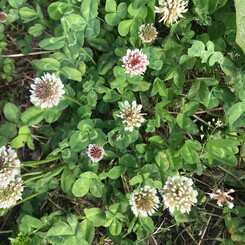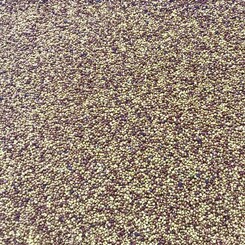White Clover
Trifolium repens
Trifoliate leaves are smooth, and hairless. Leaflet oval or heart-shaped may have a light crescent mark on the upper side. Cultivars range from small-leaved, low-growing and lower-yielding to large-leaved upright types. Flower heads are made up of 30-40 flower clusters on a long stalk; to 2.5 cm diameter; pale pink/white, fade to brown. Small pods containing 3-4 seeds which are brown/yellow; egg/heart-shape; ~1.6 million/kg
- high nutritive value, adds to grass/clover pastures
- year-round growth with vigorous growth in spring/summer
- well adapted to grazing - potentially long-lived perennial
- over-winters by a network of horizontal stems, stolons
- can be grazed hard but is susceptible to sustained heavy grazing by sheep in dry conditions
- fixes nitrogen in pastures, improving overall pasture production
- productive perennial for high rainfall greater than 700mm or irrigated pasture;
- cold and frost tolerant. likes 18-30°C
- suited to soil pH > 4.5; optimum 5.3
- tolerates poorly drained soils
- well suited to peaty soil
- Olsen soil P > 15
- very suitable for silage/hay.
cons
- vigour limited by viral diseases
- low tolerance to summer moisture stress,
- high bloat risk if dominant in spring. May contain cyanogenic glucoside compounds; the concentration is rarely sufficient to be significant.
Sow
Sown spring or Autumn Sowing rate 2-4 kg/ha in a mix; sow depth 5-15 mm.
- Sow in mixes with most temperate grasses, including perennial ryegrass, phalaris, tall fescue. Legumes like strawberry clover, red clover and sub. clovers
- Herbs like plantain, and chicory.
- Sowing/planting rates in mixtures 2-4 kg/ha


